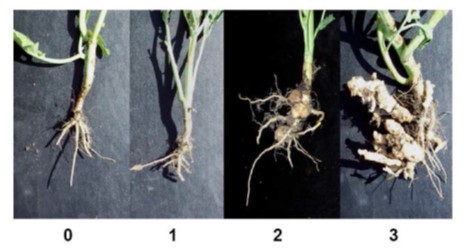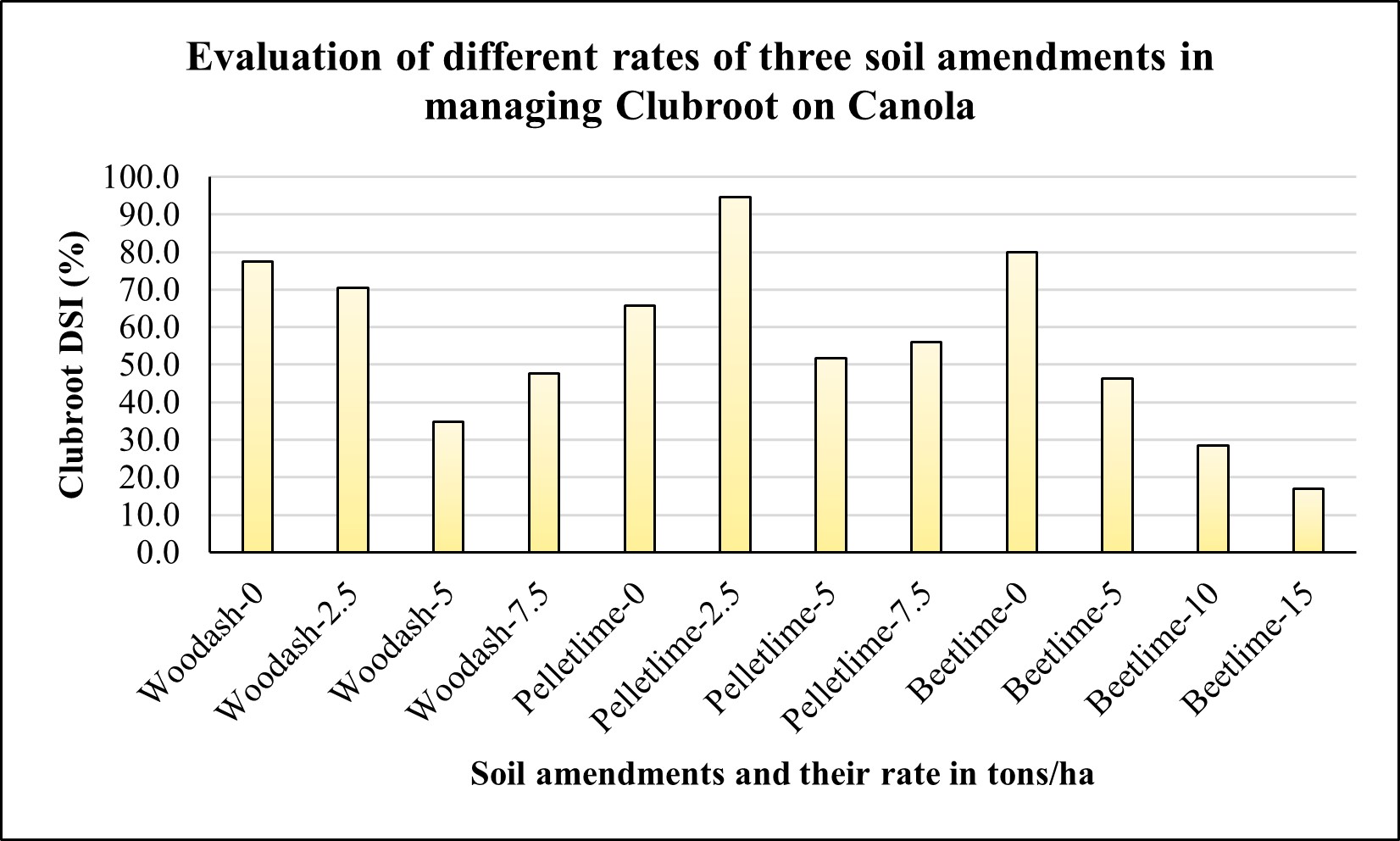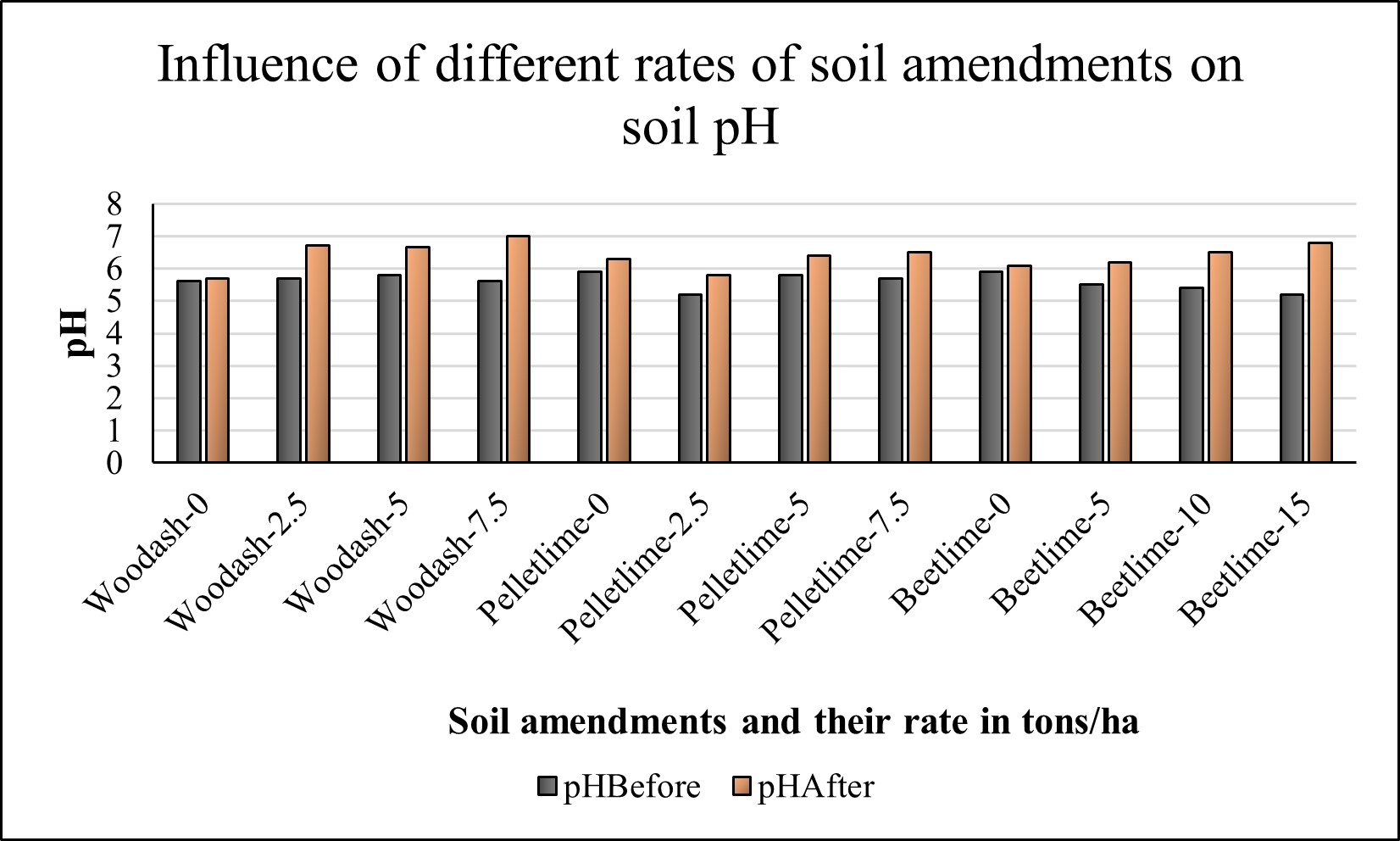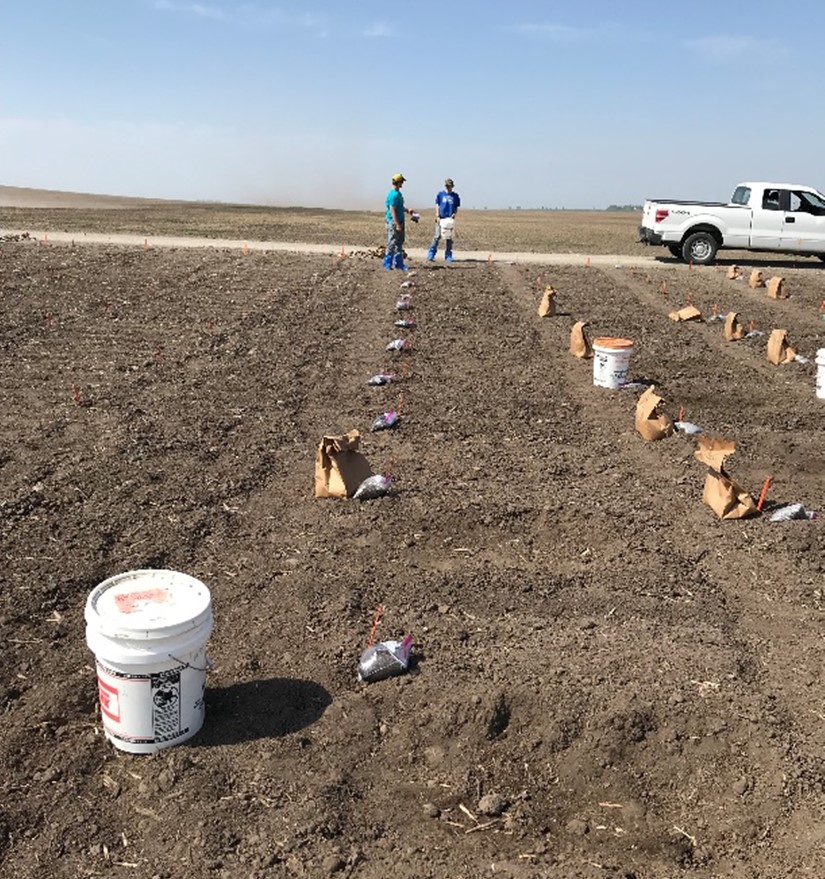Objective: Determination of optimum rate of soil amendments to manage clubroot in patches on canola.
Two years of on farm research with soil amendments of beet lime, pellet lime and wood ash has given promising results to manage clubroot (2017 and 2018 Langdon Research Extension Center Annual Reports). The rates at which the amendments were applied were 15, 7.5 and 7.5 tons/ha, respectively. However, application at such huge rates under field conditions can be a practical feasibility question. Taking these results into consideration, the current objective was formulated.
Method: Soil amendments of beet lime, pellet lime, and wood ash were evaluated. Three doses of 15, 10, and 7.5 tons/ha for beet lime. Pellet lime and wood ash were tested at 7.5, 5 and 2.5 tons/ha. Soil amendments were arranged as whole plot treatments, and doses/rates were sub-plots arranged in factorial randomized complete block design and replicated 4 times. Whereas, the non-treated check did not receive any treatment and was fine tilled as the other treatments. All three doses of each treatment of wood ash, pellet lime, and beet lime were applied seven days before planting into a soil depth of four inches and were thoroughly mixed in the soil with a rototiller.
Initial clubroot resting spore counts were calculated by taking soil samples before application of soil amendments from a four inch soil depth. Variety “DKL 30-42” was planted as it proved very susceptible to clubroot (Chapara, 2018 Langdon Research Extension Center Annual Report). Canola roots were evaluated after 60 days of planting and were rated as shown in Figure 1 below.
Figure 1: Clubroot rating scale.
Clubroot rating scale: 0 = no galling; 1 = a few small galls (small galls on less than 1/3 of roots), 2 = moderate galling (small to medium-sized galls on 1/3 to 2/3 of roots), 3 = severe galling (medium to large-sized galls on more than 2/3 of roots) (S.E. Strelkov).
Data was analyzed using GLM in Agrobase.
Results: Beet lime at 15 tons/ha was the most effective treatment among the different treatments tested at different rates (p< .05) (Figure 2). A 1.6 unit pH change (Figure 3) was observed on the application of beet lime at 15 tons/ha and could be attributed in lowering the disease severity index (DSI) of clubroot. The high rate of beet lime can be used in patch management of clubroot on canola.
Figure 2: Effect of different rates of beet lime, pellet lime, and wood ash on clubroot management on canola.
Figure 3: Effect of different rates of beet lime, pellet lime, and wood ash on soil pH to manage clubroot on canola.
Acknowledgements: Funding from Northern Canola Growers Association and North Dakota Crop Protection Product Harmonization Board, and thanks to all the product suppliers. Special thanks to Intern Mr. Jacob Kram (NDSU) and Ben Girodat (LREC Seasonal Employee).



